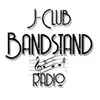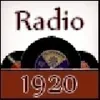40s Live Radio Stations
Radio Stations
Choose a Genre
The 1940s was a significant decade in the history of music, with a variety of genres emerging and evolving. During this time, radio was the primary source of entertainment and information for many people, and it played a crucial role in the development and promotion of music. In this context, the "40s" genre refers to the music that was popular during this era and was broadcasted on radio stations.
The 40s genre is a broad term that encompasses a diverse range of musical styles, including swing, big band, jazz, blues, and popular music. The music of this era was characterized by its upbeat and lively rhythms, soaring melodies, and catchy lyrics. The music was often performed by large orchestras, featuring brass, woodwind, and percussion instruments, and supported by a rhythm section that included drums, bass, and piano.
Swing was perhaps the most popular genre of music during the 1940s. This music was characterized by its driving rhythms, energetic improvisation, and upbeat melodies. Swing bands were typically large ensembles that included multiple saxophones, trumpets, and trombones, as well as a rhythm section that included drums, bass, and piano. Some of the most famous swing bands of the 40s included the Glenn Miller Orchestra, the Duke Ellington Orchestra, and the Count Basie Orchestra.
Big band music was another popular genre during the 1940s. This music was similar to swing, but it featured larger ensembles and a more structured approach to arranging and composing. Big bands often included multiple sections, such as saxophones, trumpets, trombones, and rhythm, and they played a mix of swing, jazz, and popular music. Some of the most famous big bands of the 40s included the Benny Goodman Orchestra, the Tommy Dorsey Orchestra, and the Artie Shaw Orchestra.
Jazz was also an important genre of music during the 1940s, and it underwent significant changes during this era. Bebop, a subgenre of jazz that emphasized fast tempos, complex harmonies, and intricate improvisation, emerged in the 1940s and had a significant influence on the development of jazz in subsequent decades. Some of the most famous jazz musicians of the 40s included Charlie Parker, Dizzy Gillespie, and Thelonious Monk.
Blues music also remained popular during the 1940s, and it was often played on radio stations alongside swing and jazz. Blues music featured a distinctive call-and-response structure, with the singer or soloist alternating with the band or backing vocals. Some of the most famous blues musicians of the 40s included Muddy Waters, B.B. King, and Howlin' Wolf.
Popular music was also an important genre during the 1940s, with many singers and songwriters achieving widespread fame and success. Pop music of the 40s was characterized by its catchy melodies, sentimental lyrics, and smooth vocal stylings. Some of the most famous pop singers of the 40s included Frank Sinatra, Bing Crosby, and Nat King Cole.
In conclusion, the 40s genre of radio stations represented a diverse and vibrant era in music history, characterized by a wide range of genres and styles. From swing and big band to jazz, blues, and popular music, the music of the 1940s continues to be celebrated and enjoyed by music lovers around the world.
The 40s genre is a broad term that encompasses a diverse range of musical styles, including swing, big band, jazz, blues, and popular music. The music of this era was characterized by its upbeat and lively rhythms, soaring melodies, and catchy lyrics. The music was often performed by large orchestras, featuring brass, woodwind, and percussion instruments, and supported by a rhythm section that included drums, bass, and piano.
Swing was perhaps the most popular genre of music during the 1940s. This music was characterized by its driving rhythms, energetic improvisation, and upbeat melodies. Swing bands were typically large ensembles that included multiple saxophones, trumpets, and trombones, as well as a rhythm section that included drums, bass, and piano. Some of the most famous swing bands of the 40s included the Glenn Miller Orchestra, the Duke Ellington Orchestra, and the Count Basie Orchestra.
Big band music was another popular genre during the 1940s. This music was similar to swing, but it featured larger ensembles and a more structured approach to arranging and composing. Big bands often included multiple sections, such as saxophones, trumpets, trombones, and rhythm, and they played a mix of swing, jazz, and popular music. Some of the most famous big bands of the 40s included the Benny Goodman Orchestra, the Tommy Dorsey Orchestra, and the Artie Shaw Orchestra.
Jazz was also an important genre of music during the 1940s, and it underwent significant changes during this era. Bebop, a subgenre of jazz that emphasized fast tempos, complex harmonies, and intricate improvisation, emerged in the 1940s and had a significant influence on the development of jazz in subsequent decades. Some of the most famous jazz musicians of the 40s included Charlie Parker, Dizzy Gillespie, and Thelonious Monk.
Blues music also remained popular during the 1940s, and it was often played on radio stations alongside swing and jazz. Blues music featured a distinctive call-and-response structure, with the singer or soloist alternating with the band or backing vocals. Some of the most famous blues musicians of the 40s included Muddy Waters, B.B. King, and Howlin' Wolf.
Popular music was also an important genre during the 1940s, with many singers and songwriters achieving widespread fame and success. Pop music of the 40s was characterized by its catchy melodies, sentimental lyrics, and smooth vocal stylings. Some of the most famous pop singers of the 40s included Frank Sinatra, Bing Crosby, and Nat King Cole.
In conclusion, the 40s genre of radio stations represented a diverse and vibrant era in music history, characterized by a wide range of genres and styles. From swing and big band to jazz, blues, and popular music, the music of the 1940s continues to be celebrated and enjoyed by music lovers around the world.









